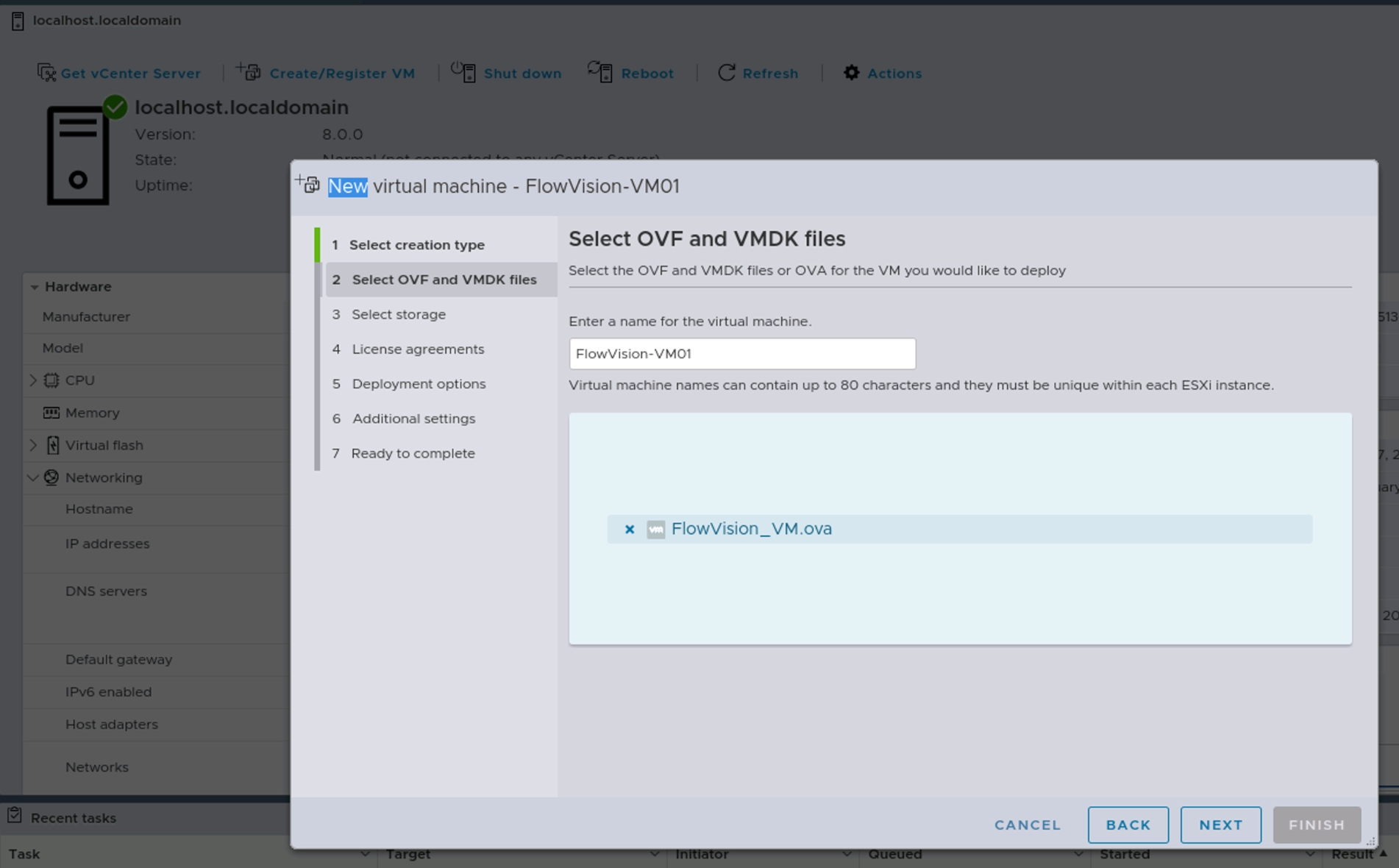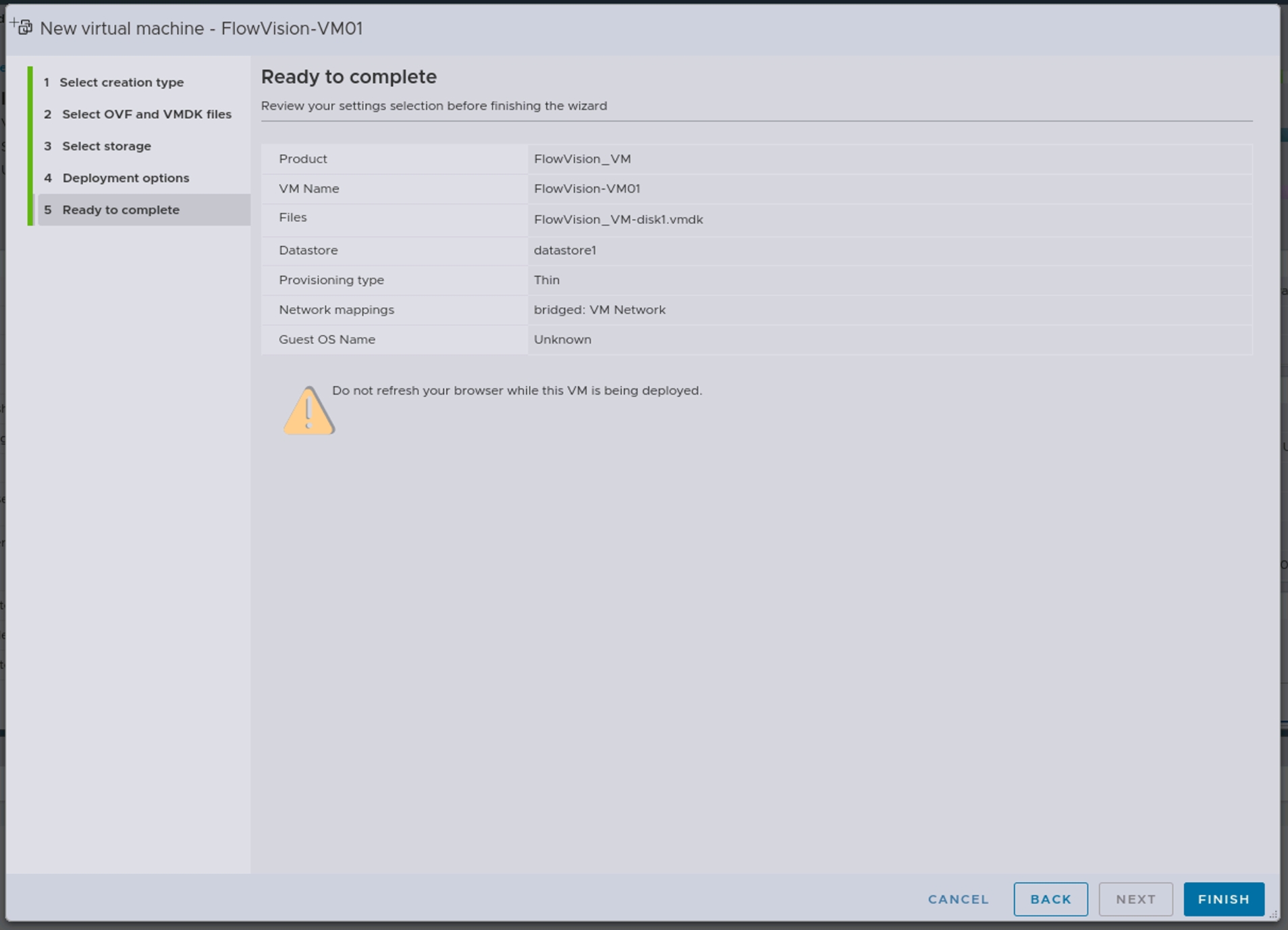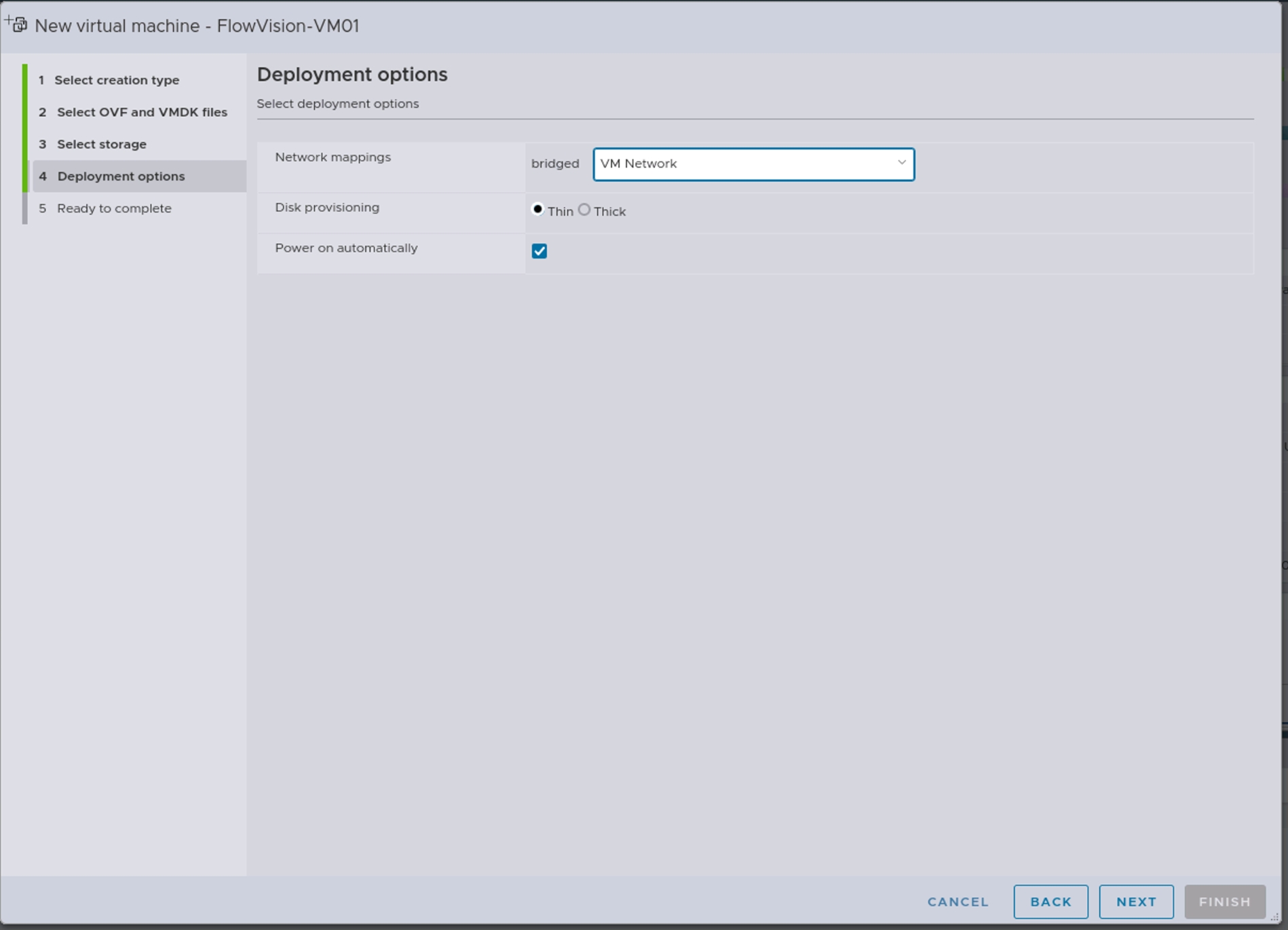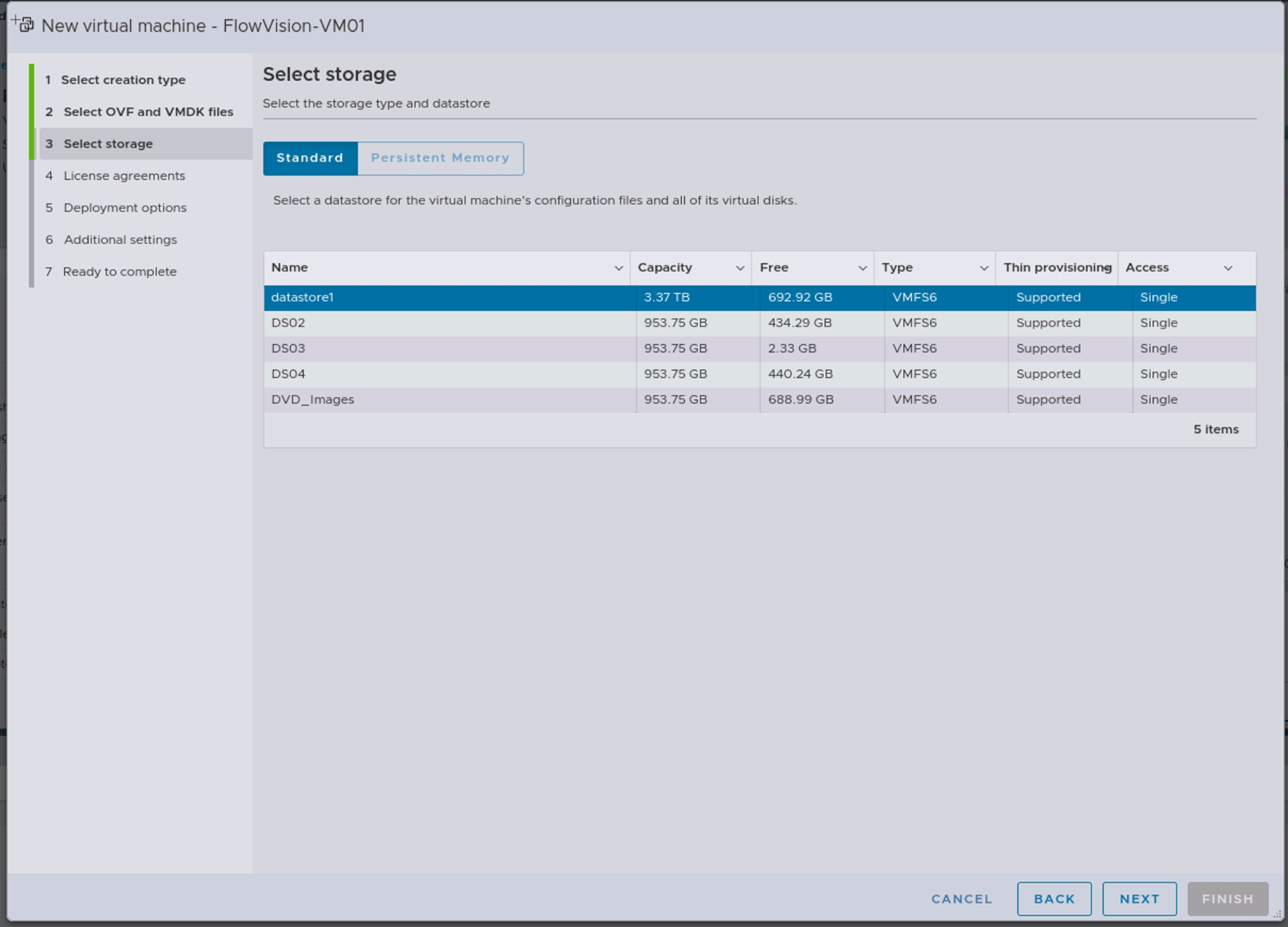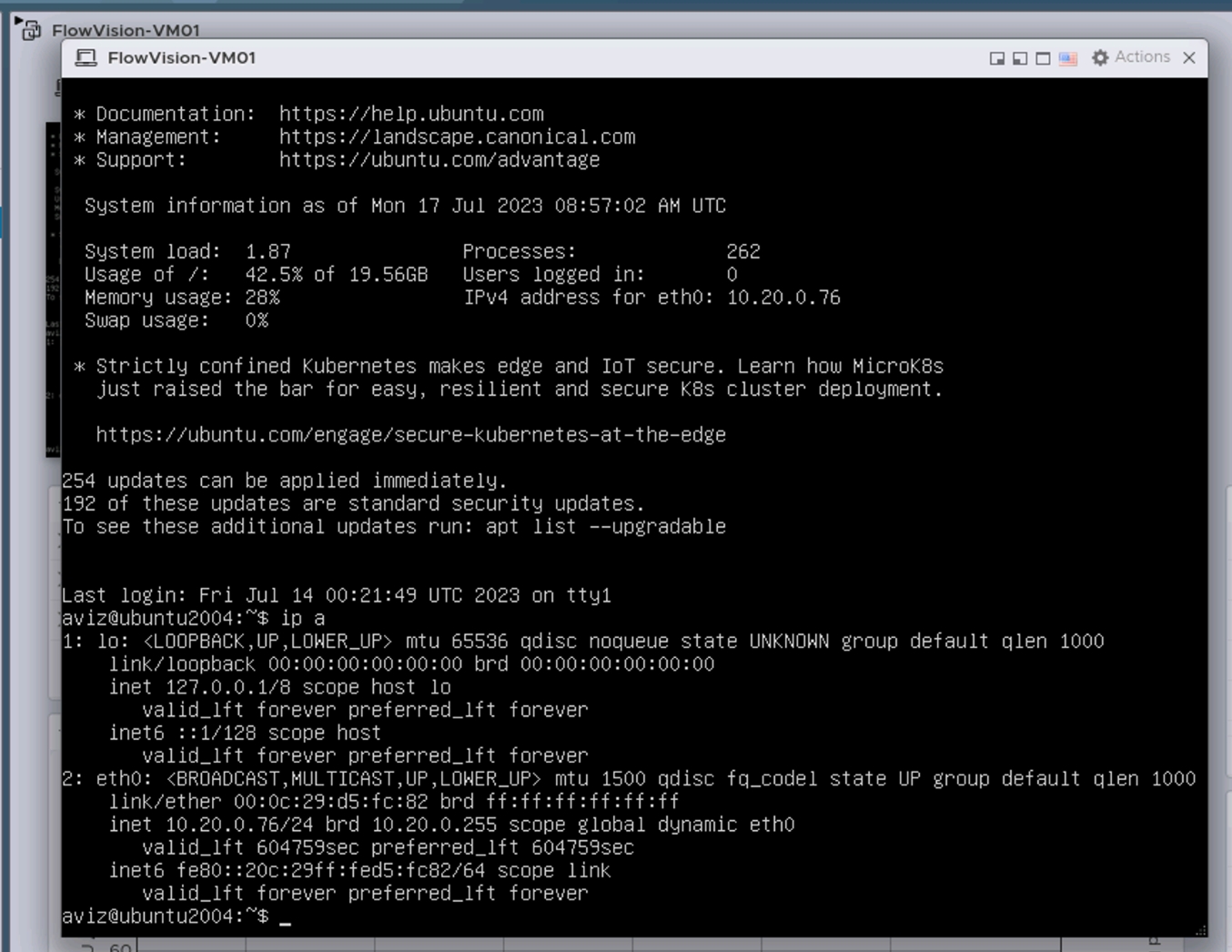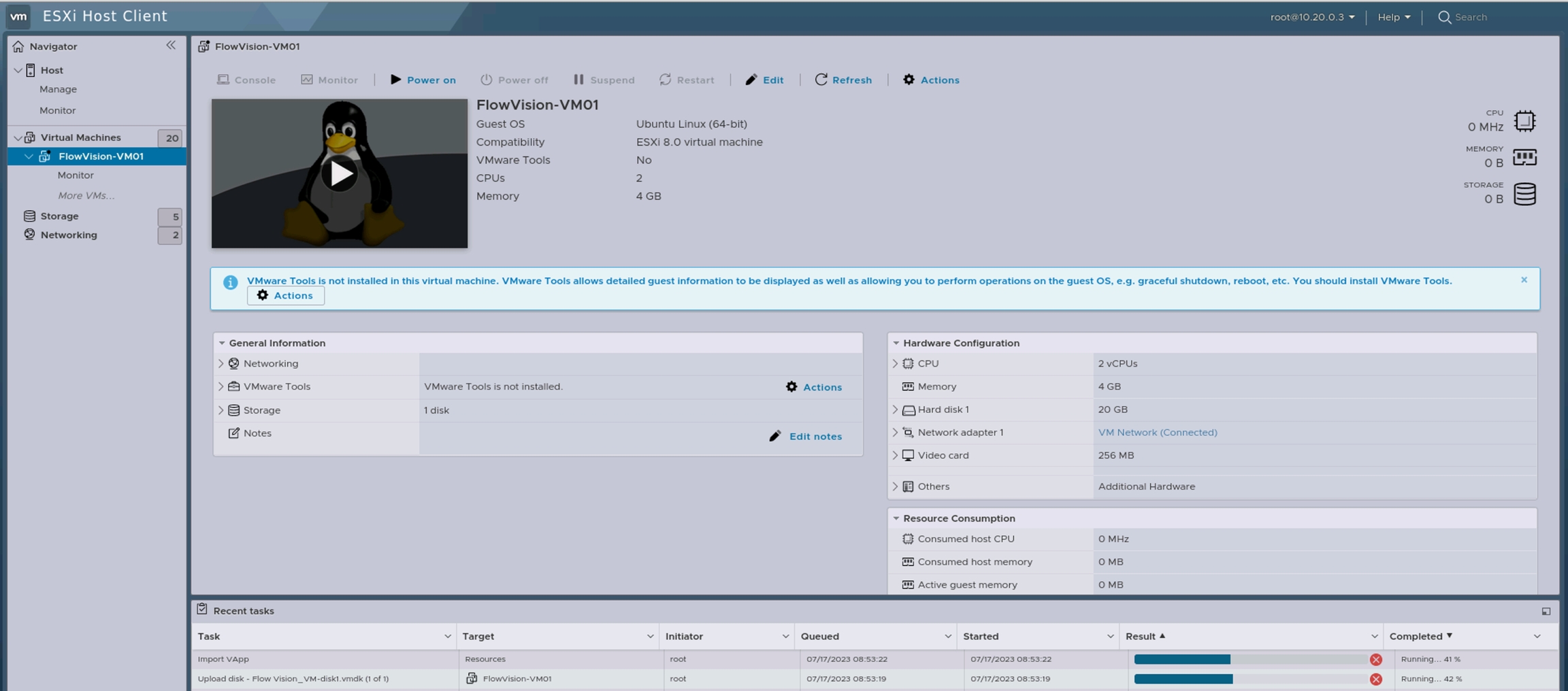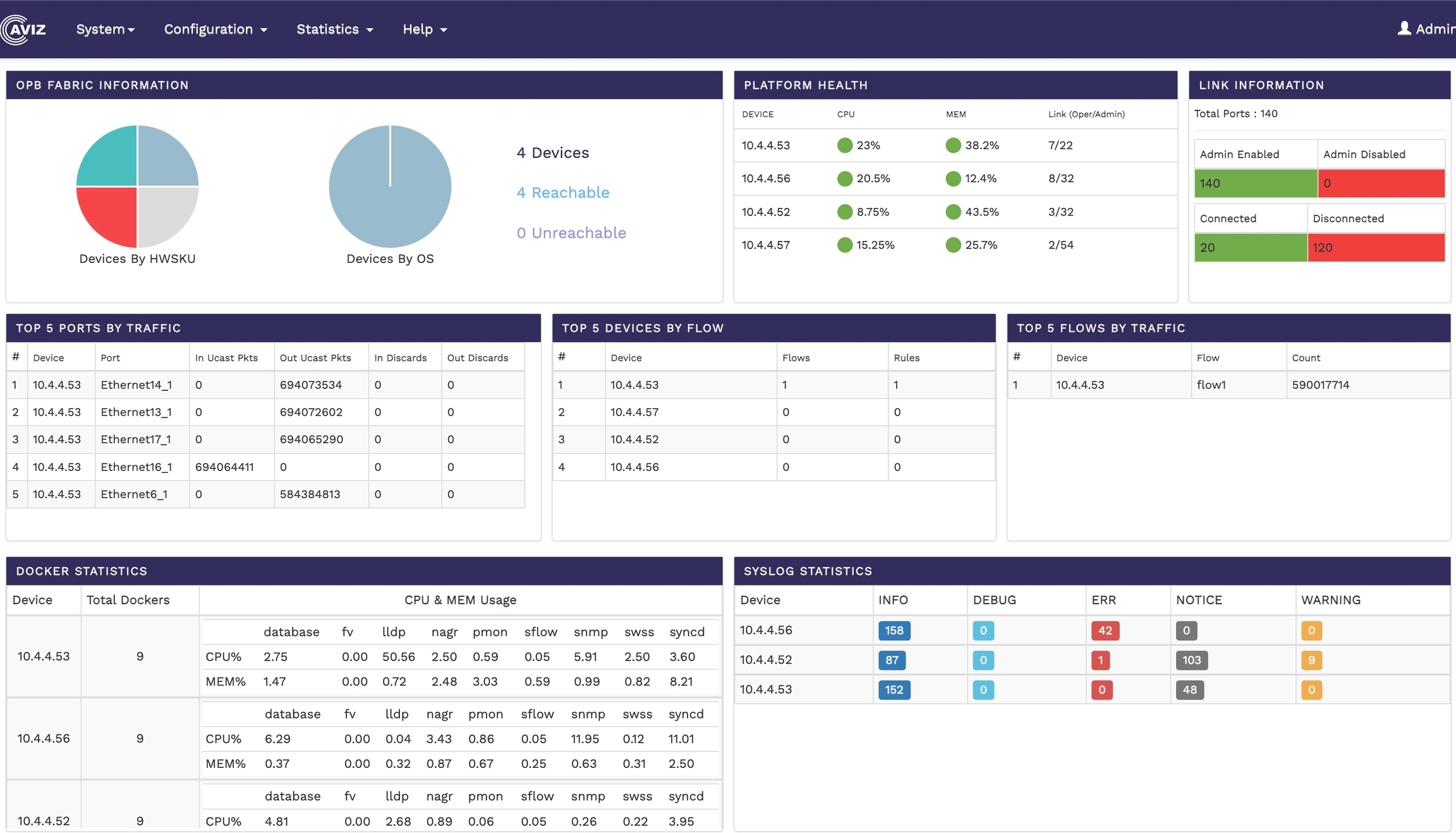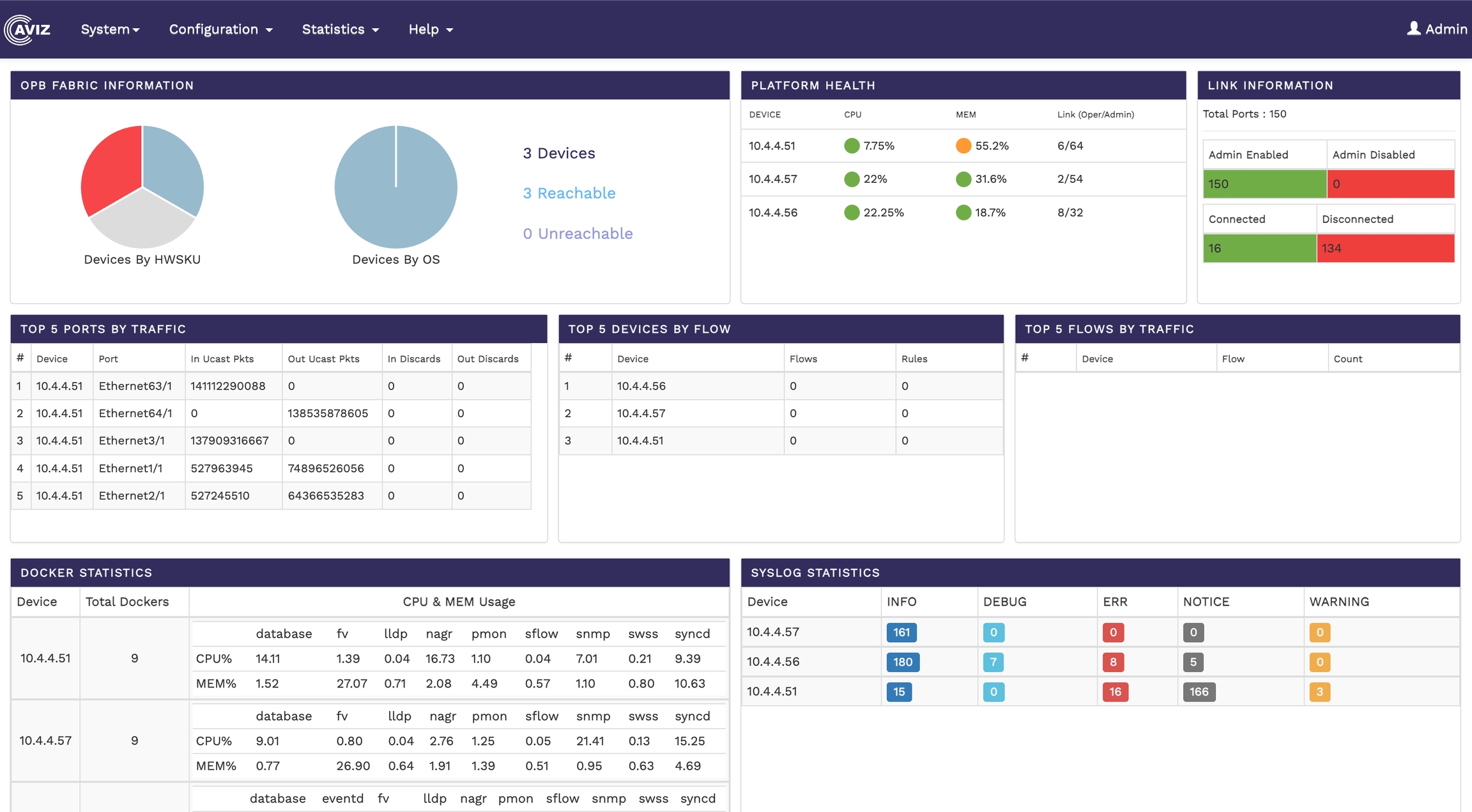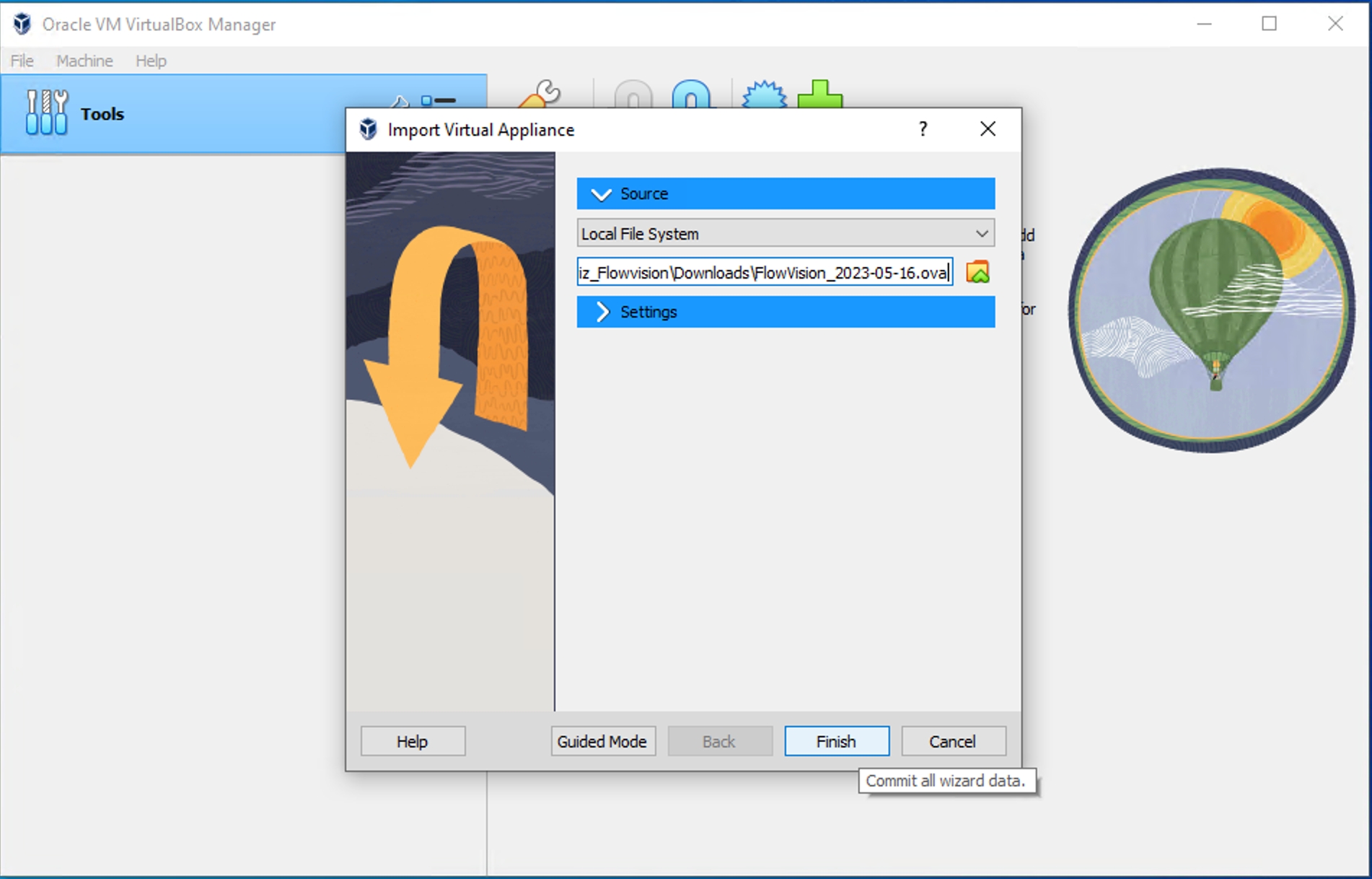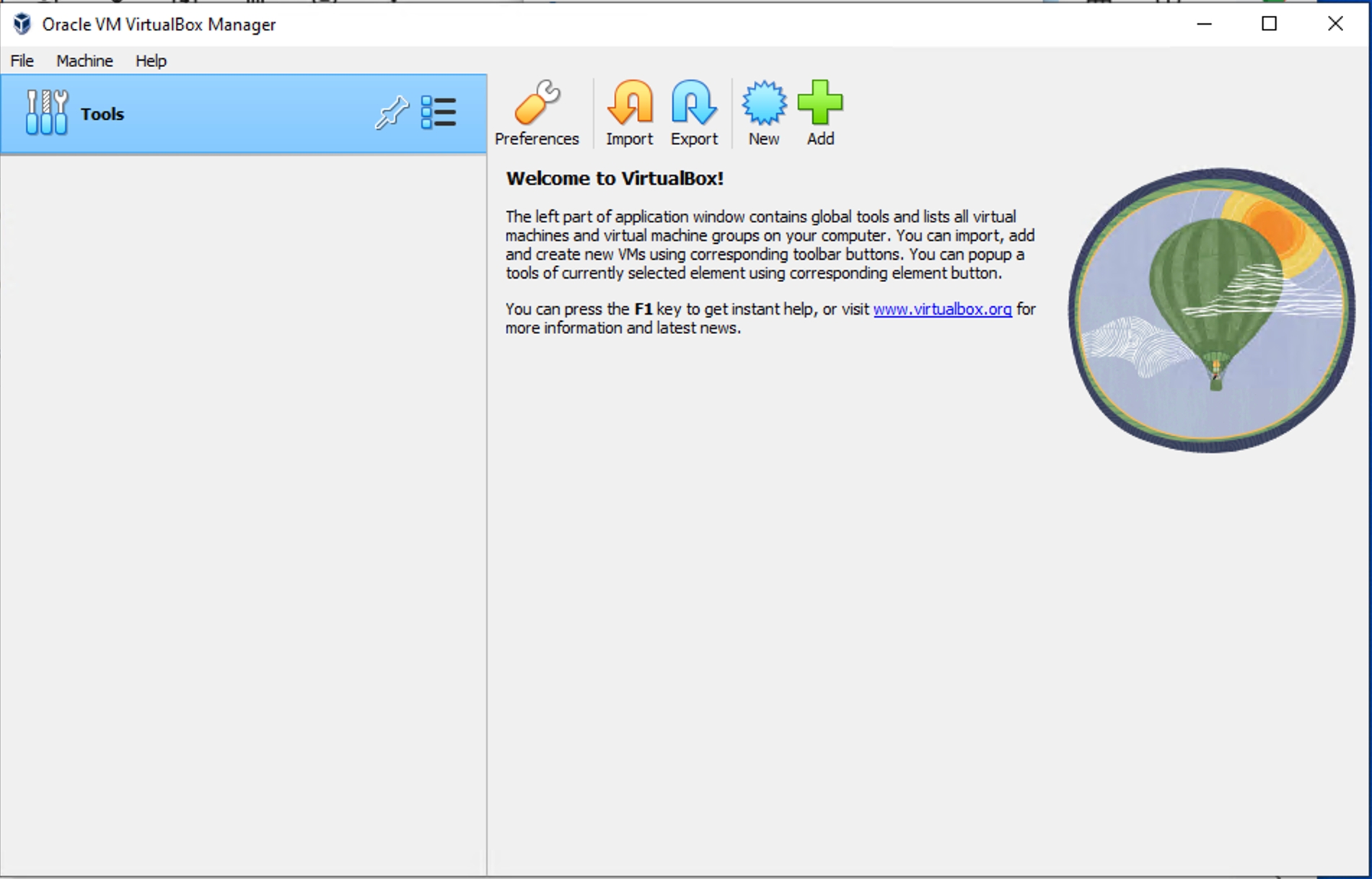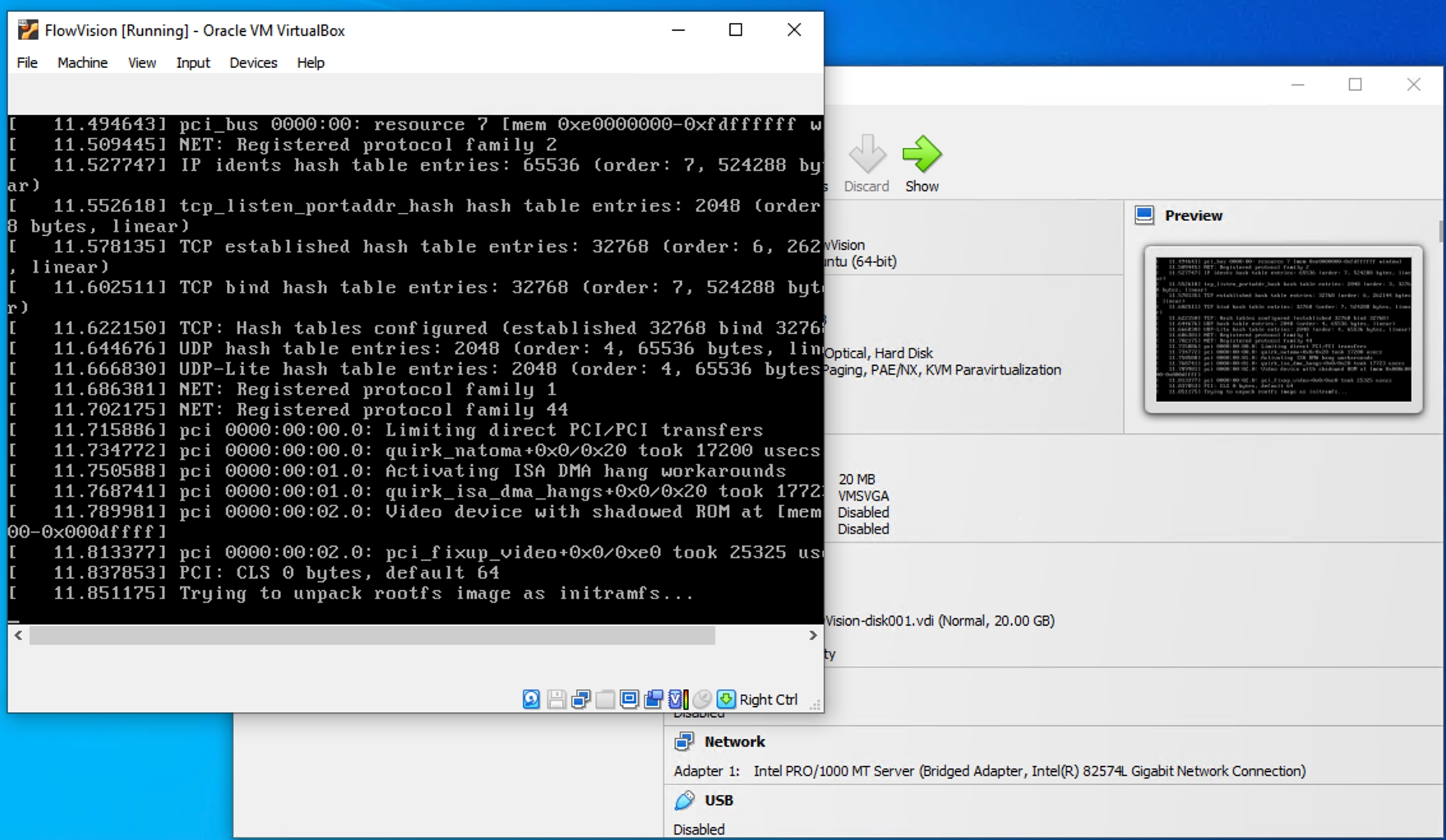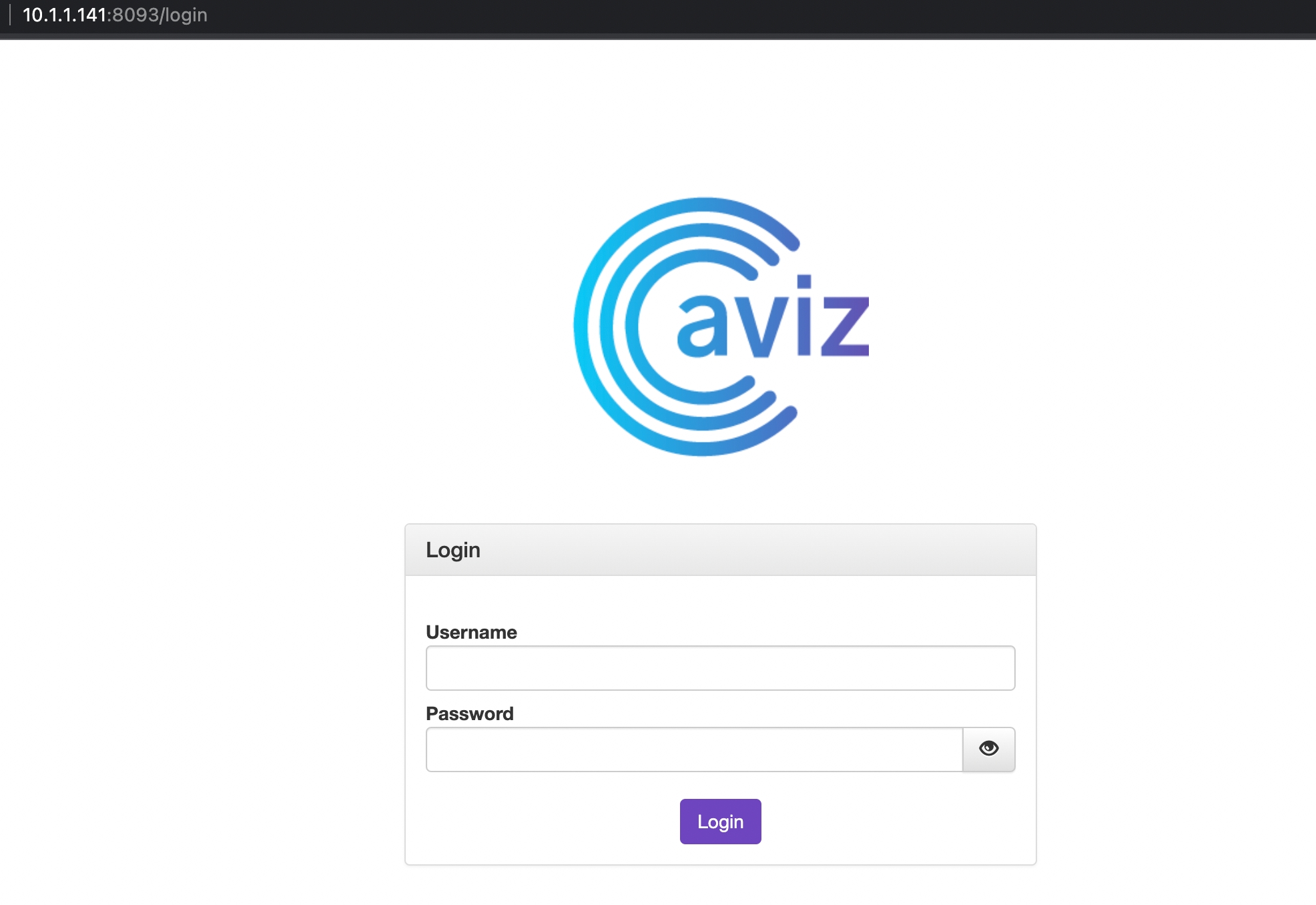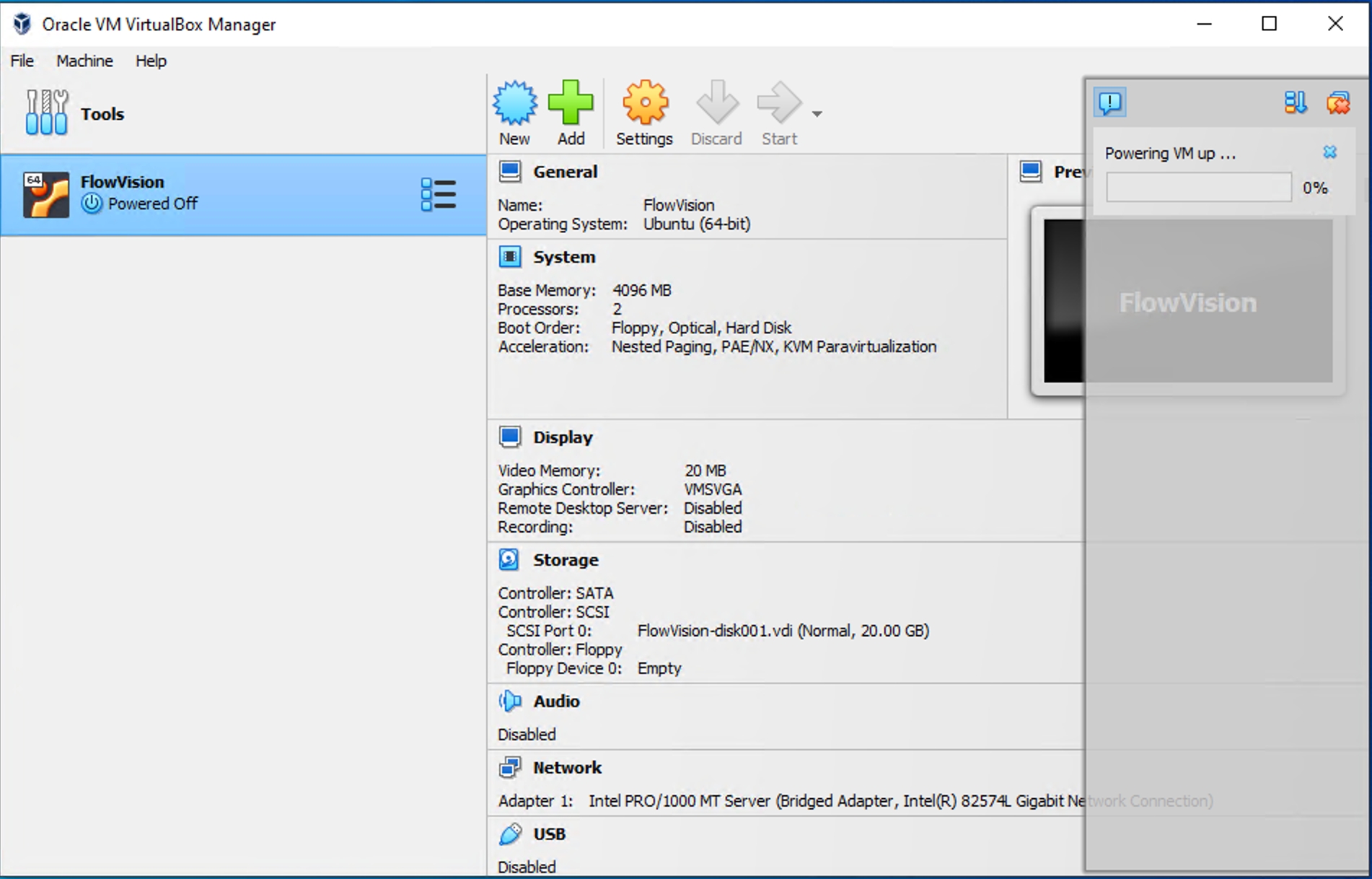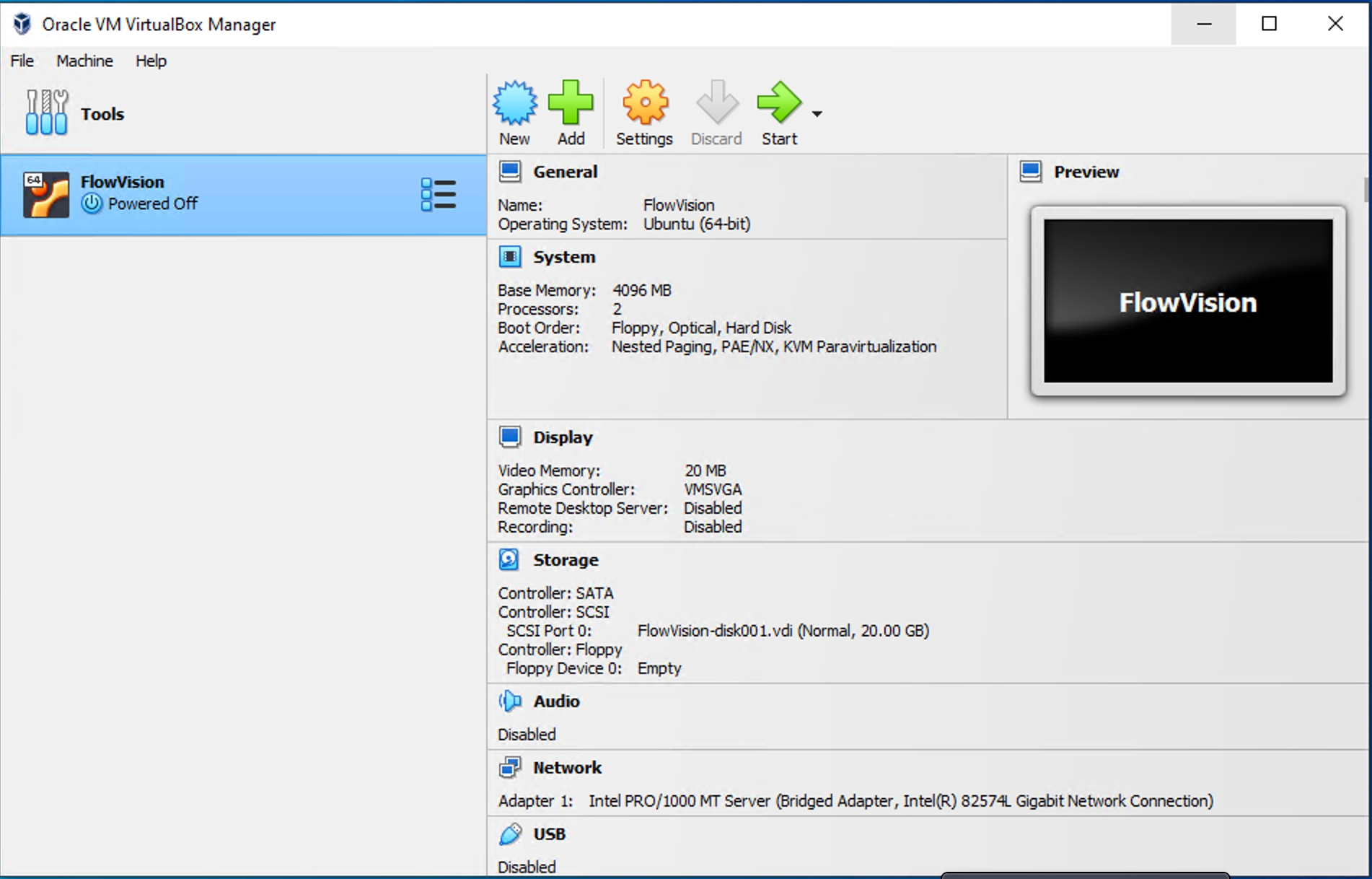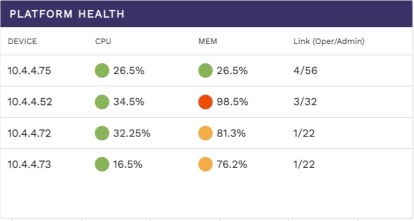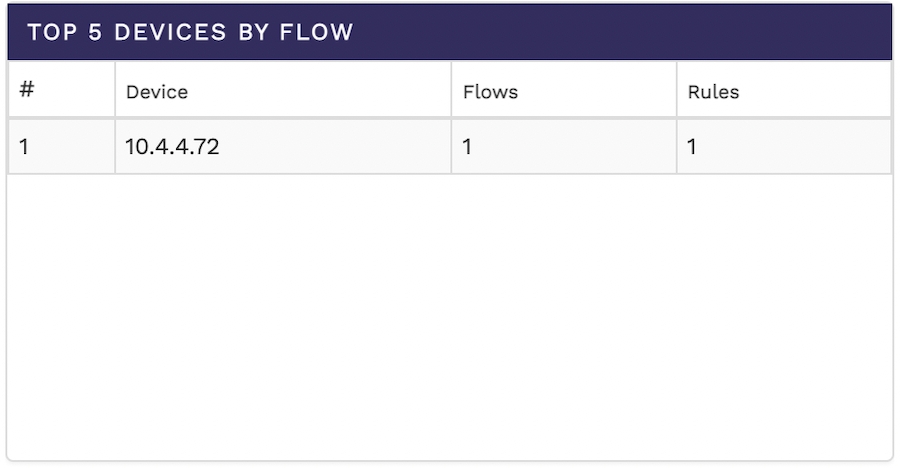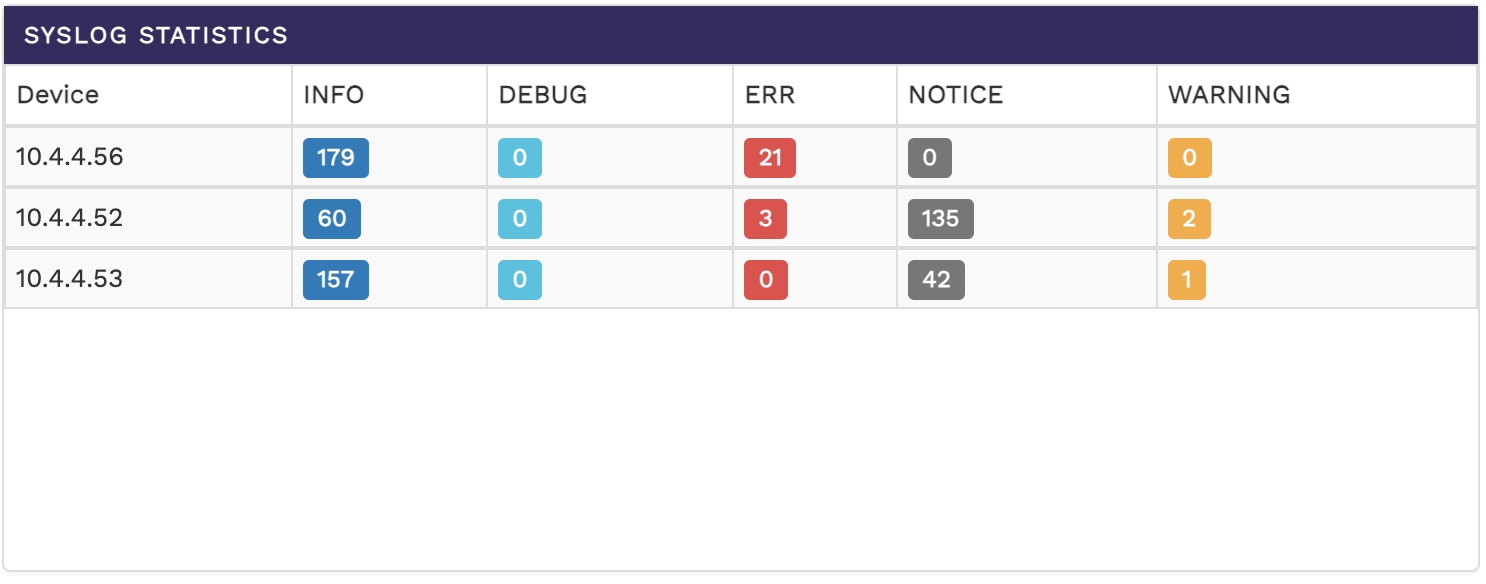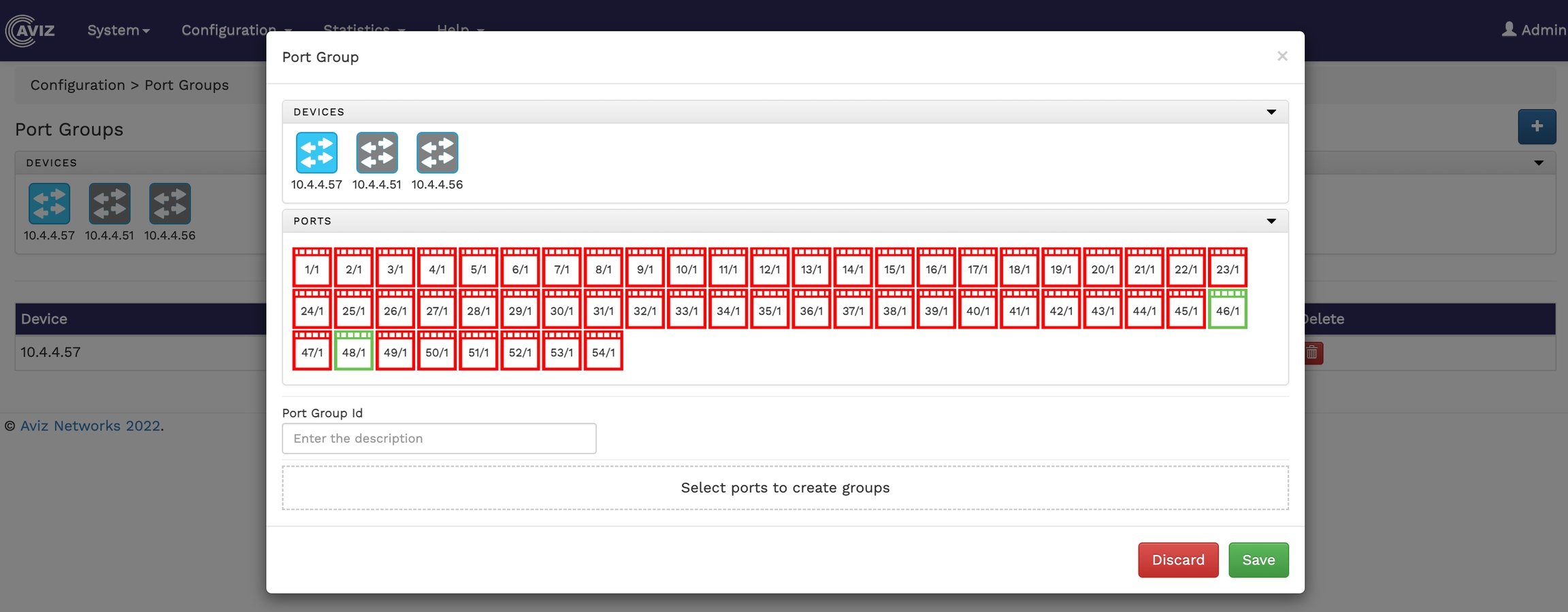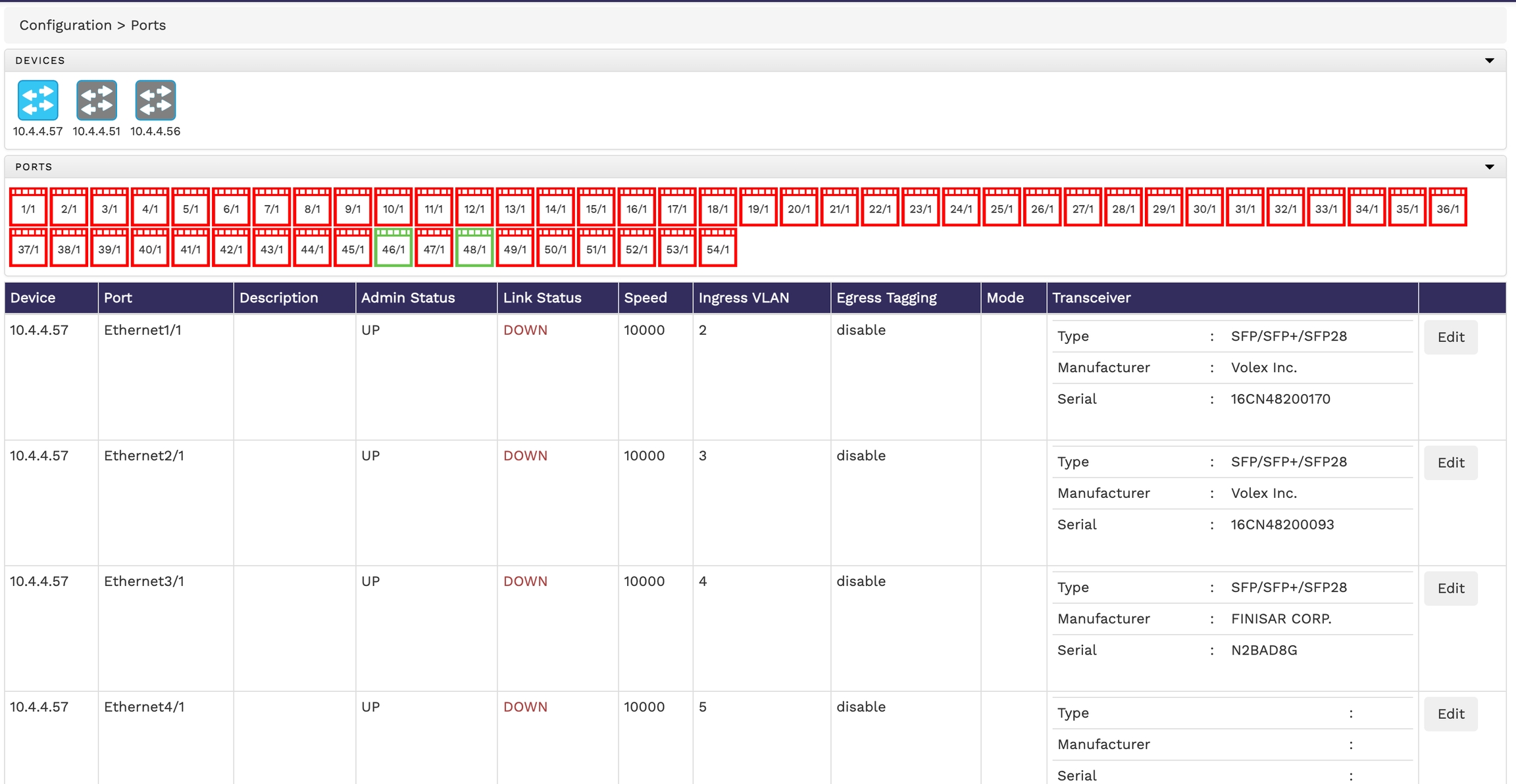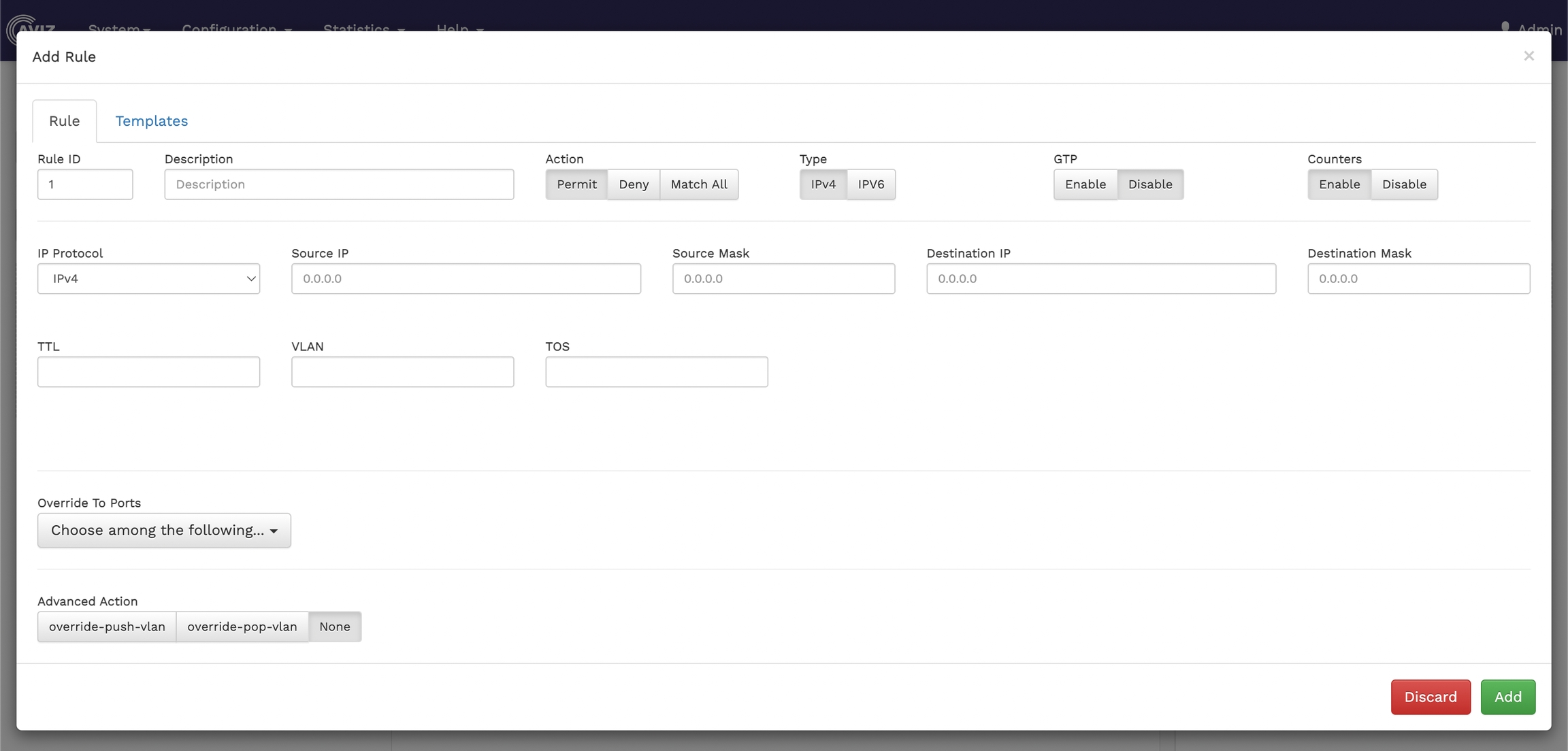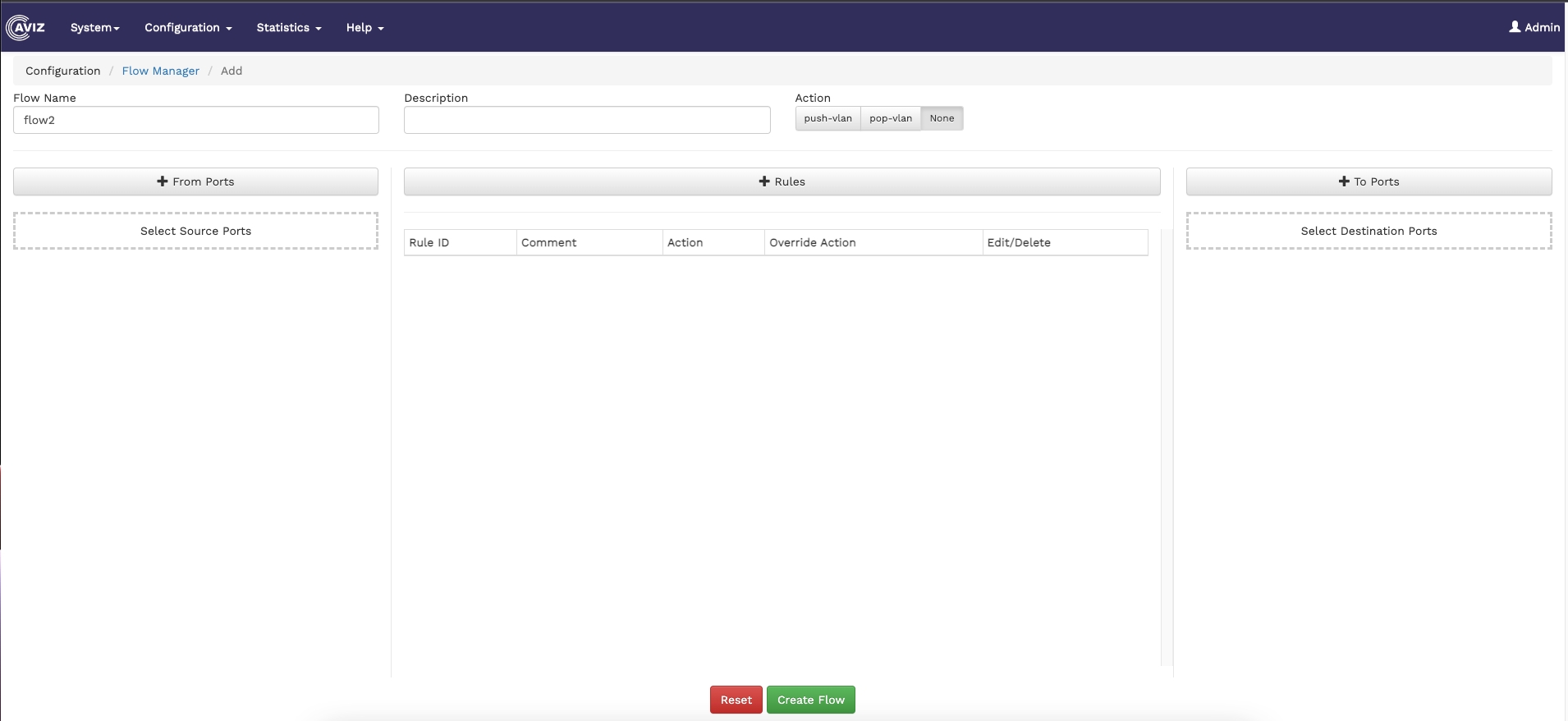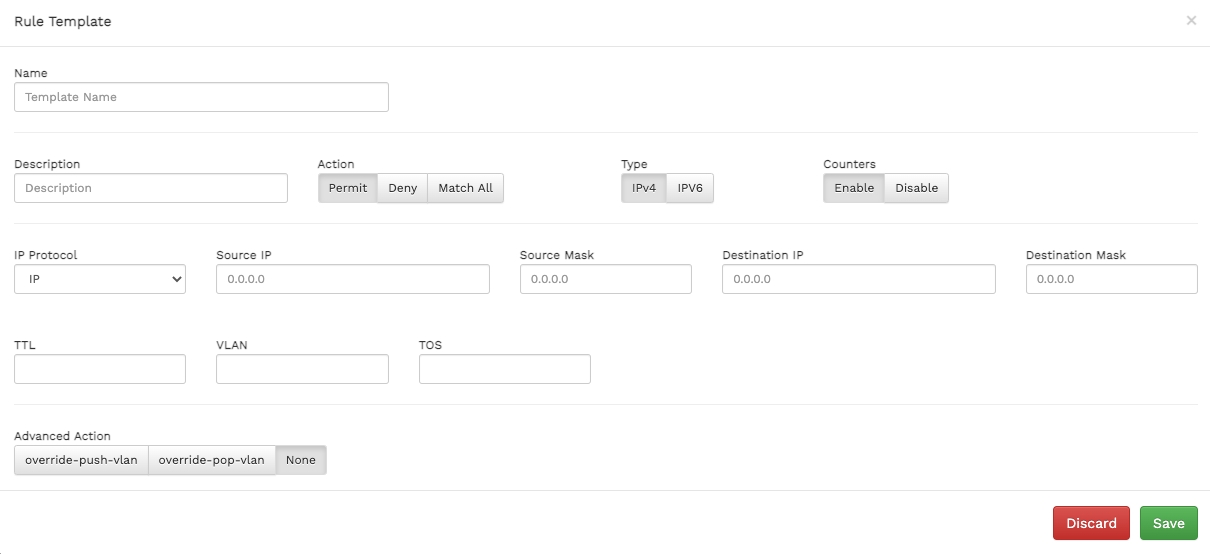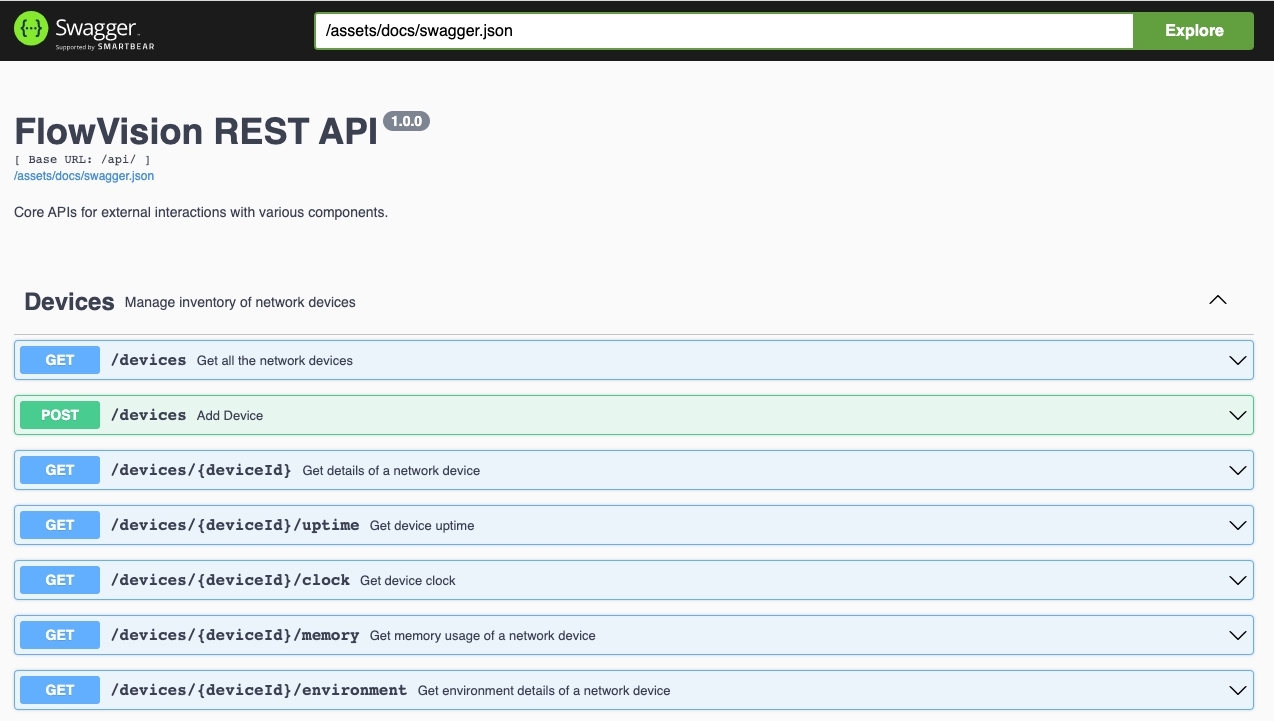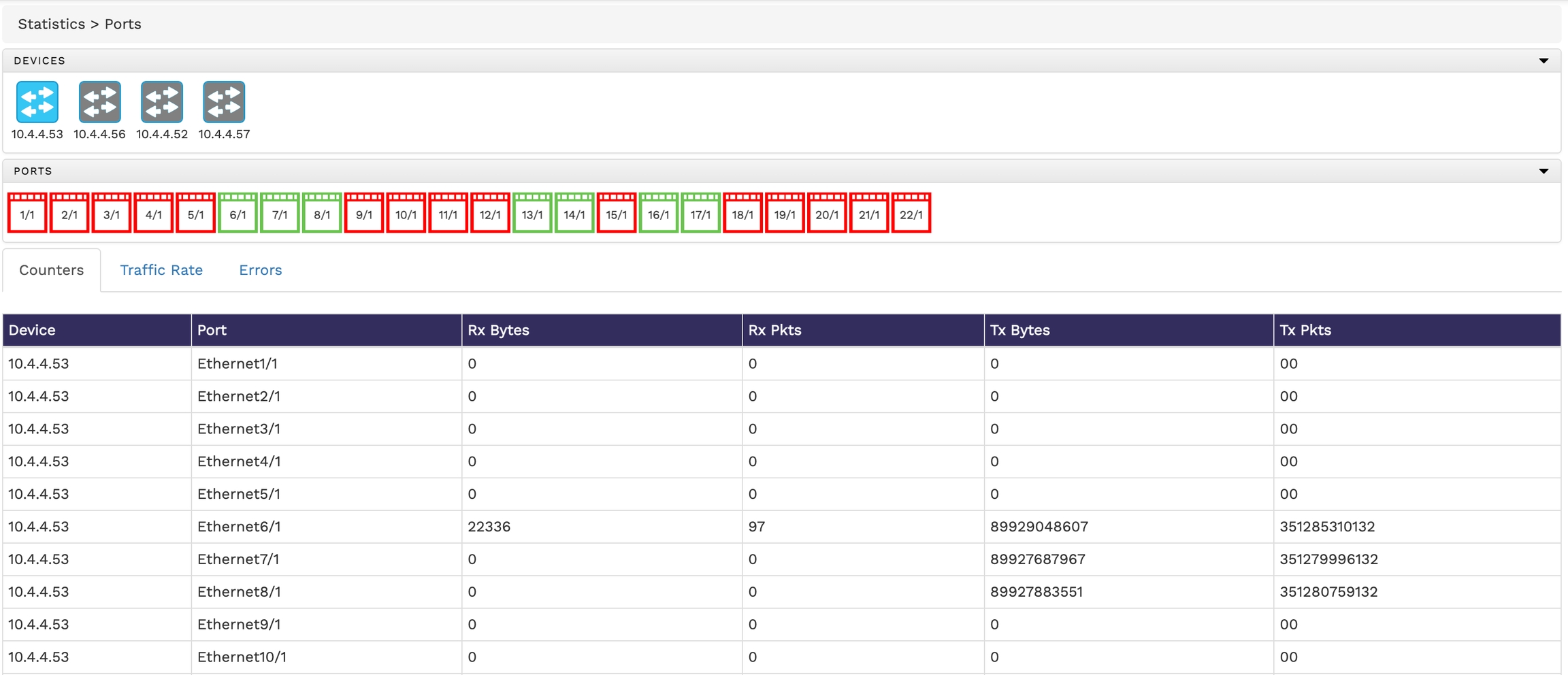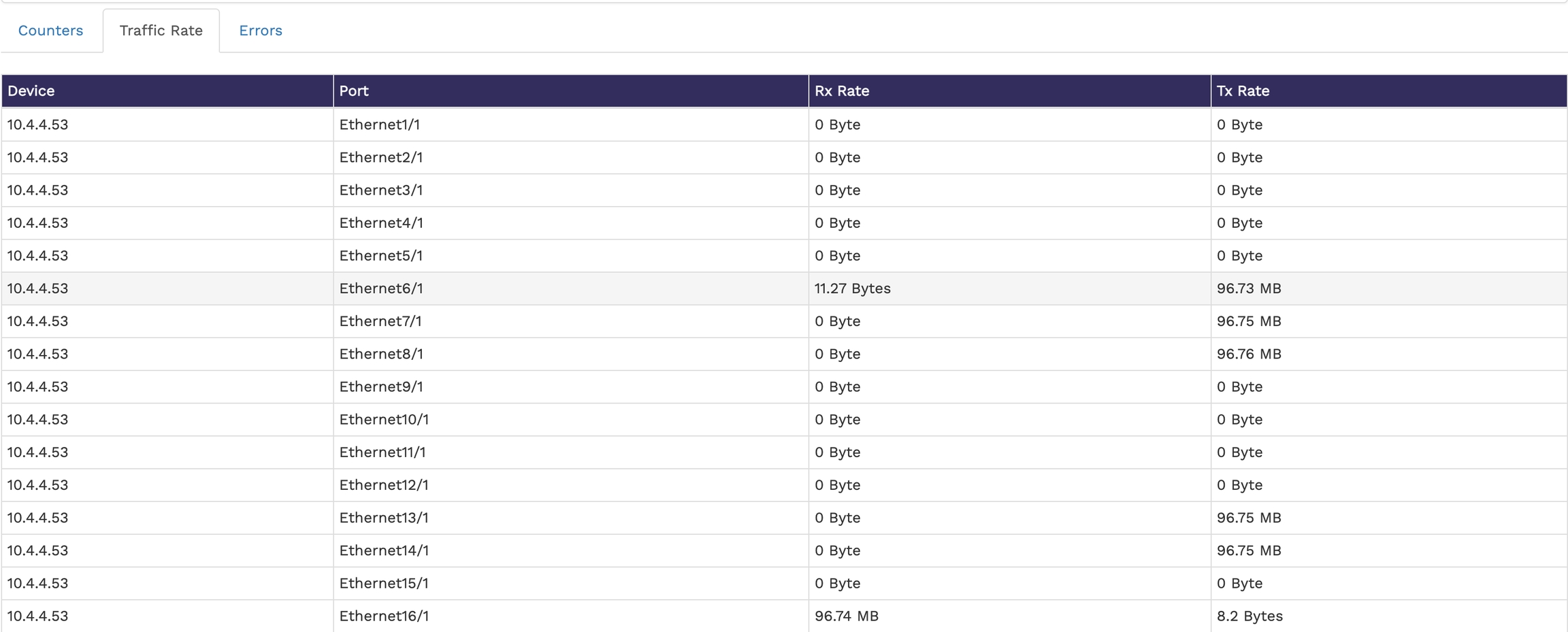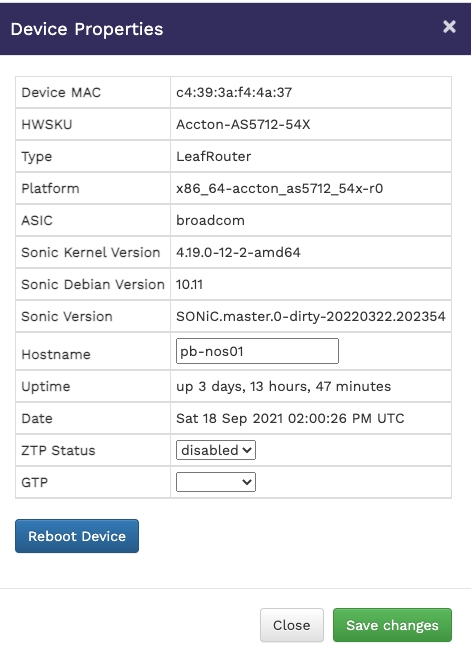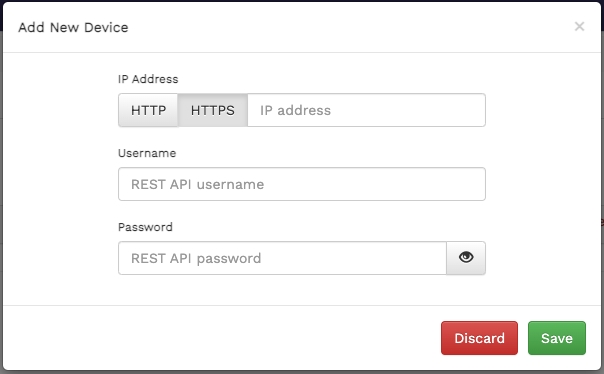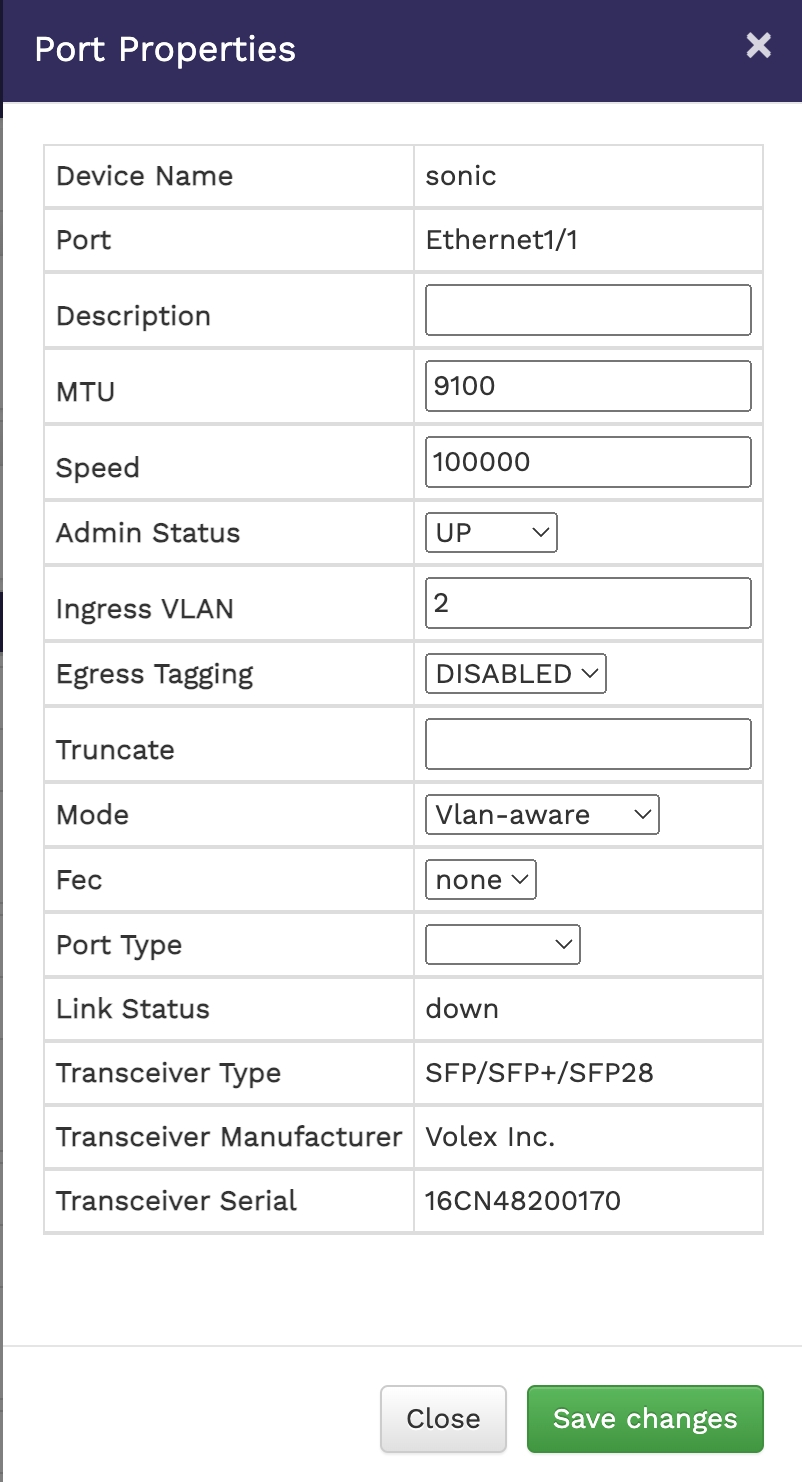
Loading...
Loading...
Loading...
Loading...
Loading...
Loading...
Loading...
Loading...
Loading...
Loading...
Loading...
Loading...
Loading...
Loading...
Loading...
Loading...
Loading...
Loading...
Loading...
Loading...
Loading...
Loading...
Loading...
An ESXi Host with the below minimum requirement available for FlowVision:
2 vCores
4 GB RAM
20 GB HDD
Log in to the ESXi Host and click on 'Create/Register VM'
Click on 'Deploy a virtual machine from an OVF or OVA file'
Name the VM and select the downloaded 'OVA' file
Choose the 'datastore' where you want to install the VM
Select the 'VM-Network' to ensure that the VM is reachable
Review the configuration and click on 'FINISH'
Wait for the OVA file to upload; Check the status in 'Recent tasks' at the bottom of the screen
'Power on' the VM
Login to the VM with default credentials
User: aviz
Password: Aviz@123
Check DHCP assigned IP on the VM with 'ip a'
Login to the Web-GUI at https://<VM-IP>/ with default credentials
User: admin
Password: admin
The FlowVision Controller can be installed using the following methods:
The System menu lets you perform the following actions:
This guide provides you with information on how to use the FlowVision graphical user interface to manage devices.
The FlowVision GUI has the following menu options at the top level:
FlowVision uses TCP port 443 for its Web-GUI and TCP port 8091 for communication with the OPB switches.
The following image shows the home page of the Aviz FlowVision GUI:
To access the system and device information, click System > General.
The system information table shows you the product name, version information, and technical support information for the system.
The following image shows you the system information tab:
The devices information table shows detailed information and properties of each connected device. For each device, the table shows the IP address, the MAC address, the platform on which the device is running, the HWSKU information, the SONiC version of the device, the PBNOS version, and the device uptime in days, hours, and minutes.
You can edit device properties from the Devices Information table:
Change the required device property value in the editable fields. Currently, you can edit the Hostname, ZTP Status, and GTP value.
Click Save Changes to apply your changes.
Click the Reboot Device button, if you want to reboot the device.
Click the Edit button corresponding to the required device on the Devices Information table. The Device Properties window displays.
A Windows machine/VM with the below minimum requirement:
2 vCores (available for FlowVision VM)
8 GB RAM
40 GB HDD
Download Oracle VM virtual box from the below link
Install Oracle VM Virtual box
Import the OVA file in Oracle VM virtual box
Click the start button to power-on the virtual machine
Log in to the FlowVision VM with default credentials
Username: aviz
Password: Aviz@123
Get the IP address of the VM through ip address show
Access the GUI through the above IP using your favourite browser with http port: 8093
https://<VM_IP>:8093/
Login to the GUI with the default credentials
Username: admin
Password: admin
The Dashboard is the default home page of the FlowVision GUI. To return to the dashboard view from any other page, click System > Dashboard.
The Dashboard shows you the following data:
This pie chart shows you the device information based on HwSKU and the device OS. You can hover the mouse pointer over the charts to display a tooltip with more relevant information.
The following image shows the OPB fabric information charts:
The platform health table shows you the CPU usage, memory availability, and link status for each connected devices. From this data you can infer the overall health of the platform.
The following image shows the platform health table:
The link information table shows you the total number of ports from all the connected devices, the number of ports that are enabled with admin privileges, and the number of ports that are connected at any given moment.
The following image shows the link information table:
The top 5 ports by traffic shows you the top 5 ports across all connected devices sorted on the basis of their traffic rate. The table shows you the device, port number, the number of In Ucast packets, the number of Out Ucast packets, the number of In Discards, and the number of Out Discards.
The following image shows the top 5 ports by traffic table:
The top 5 devices by Flow shows you the top 5 devices sorted on the basis of the number of flows they have. The table shows the device IP, the number of flows, and the number of rules.
The following image shows the top 5 devices by flow table:
The top 5 flows by traffic shows you the top 5 flows across all connected devices sorted on the basis of their traffic rate. The table shows you the device IP, flow alias, and the count.
The following image shows the top 5 flows by traffic table:
The docker statistics table shows you the docker statistics across all connected devices along with the CPU and memory usage for each device.
The following image shows the docker statistics:
The syslog statistics table shows you the system log statistics of all connected devices. The table shows the number of messages in the info, debug, error, notice, and warning categories for each device.
The following image shows the syslog statistics:
The configuration menu helps you perform the following:
To manage connected devices from the FlowVision GUI, click System > Devices.
The Devices screen shows all the connected devices and their connection status. The devices that are online are shown with a green status and the devices that are offline are shown in a red status. You can click the icon to reboot an online device. To delete a device, click the icon.
The following image shows the Devices page:
To add a new device,
Specify the values for IP Address, Username, and Password in their respective fields.
Click Save to apply your changes and add the device. Click Discard to discard your changes.
To view the system log from the FlowVision GUI, click System > Syslog.
The Syslog page shows the system logs of all the devices that are online. You can click the device icon for each of the online devices to get the system log for that particular device. The system log shows the device IP, component, severity level, time stamp, and the severity level message with more specific information.
The following image shows the system log table of a device:
You can change the severity level of the messages displayed in the syslog table using the Severity Level drop-down menu. The available options are Debug, Info, Notice, Warning, Err, Critical, Alert, and Emergency. This is a multi-select menu where you can select multiple severity levels to be displayed.
To perform backup and restore from the FlowVision GUI, click System > Backup/Restore.
The Backups page shows the available backup files of the system. The details include the backup filename, the date of backup creation, the status of the backup and the option to delete a specific backup file.
The following image shows the Backups page:
To create a new backup, click the Create Backup drop-down menu and select Create Backup.This action creates a new backup file and its status is displayed in the Backups table.
You can also have the option to selectively backup the database or the FlowVision system. To perform this selective backup,
Select the backup you want to create. The available options are - Backup DB and Backup FlowVision. This is a multi-select option where you can choose either or both.
Click Backup to create the selected backup.
You can upgrade the FlowVision system if required. To upgrade,
Select the Upgrade FlowVision checkbox.
Click Upgrade to upgrade the system.
To manage users from the FlowVision GUI, click System > User Management.
The User Management page shows the details of all the users of the system and their user previleges and roles. From the User Management page, you can add new users, edit user roles and permissions, de-activate a user, and delete a user.
You must have admin previleges to add, edit, or delete a user.
The following image shows the User Management page:
To add a new user,
Specify the Email address, Username, Password, and Role of the new user in their respective fields. The Role drop-down field has two options - Admin and Viewer. The Admin role has full access and the Viewer role has read-only access.
Click Save to create the user.
To edit an existing user,
Edit the required details in the Email, Username, Password, and Role fields.
Click Update User to update the user details.
In the User Management table,
Click the De-Activate button to deactivate a user.
Click the Delete button to delete a user.
To view the audit logs from the FlowVision GUI, click System > Audit Logs.
The audit logs table gives you the details of all the actions performed on the connected systems. The details include the action performed, the date, the IP address of the system, the resource used, the username of the operator that performed the action, and the status of the action.
The following image shows the audit logs table:
To manage connected topologies from the FlowVision GUI, click System > Topology.
The topology screen shows all the connected devices. The devices that are online are shown in green and the devices that are offline are shown in red. Hover the mouse pointer over the device icons to get more information, such as, the IP address, RAM, CPU, SSD, and so on.
The following image shows the topology of devices in the FlowVision GUI:
You can change the device properties, refresh a device, or delete a device by accessing the Device Control window from the topology page.
Click the device icon in the topology screen. The Device Controls window displays.
Click the icon at the bottom of the Device Controls window. The Device Properties window displays.
Drag the sliders to the desired point to configure the threshold values for CPU, RAM, and SSD.
Click Save changes to apply your changes.
Other than changing the device properties, you can also reboot a device or delete it from the Device Controls window:
Click the icon to reboot the device.
Click the icon to delete a device.
If you open the Device Controls window of a device shown in red in the topology screen, you cannot configure the device properties, as the device is not reachable. You have an option to remove the device, if need be. Click the REMOVE button to remove the device.
You can group ports from a device together and create port groups. To get to the port groups page from the FlowVision GUI, click Configuration > Port Groups.
The Port Groups page shows you the connected devices and a table that shows the port groups from each device, the port group ID, the name of the ports that are part of the port group and an option to delete any existing port group.
The following image shows the Port Groups page:
To create a new port group,
Select the device where you want to create the port group.
Click the required ports to add them to the port group. The added ports are displayed in the Select ports to create Groups field.
Specify a number i.e. say 1 to 15, for the port group in the Port Group Id field.
Click Save.
To configure the ports of the connected devices from the FlowVision GUI, click Configuration > Ports.
The Ports page shows the connected devices, the ports of each of those connected devices, and a table displaying the details of the ports, such as, the admin status, link status, speed, ingress VLAN, egress tagging, truncation, mode, and the tranceiver details. Note that, the ports that have their link status as 'UP' are shown in green, whereas the ones with the link ststus as 'DOWN' are shown in red. You can hover the mouse pointer over the devices icon or ports icon for more information on that device or port.
By default, when you select a device in the Devices section, the ports table shows you the details of all the ports of the selected device. If you want to get the details of particular ports, click the port number in the Ports section. You can also edit the properties of ports from the ports table.
The following image shows the ports page with device, ports, and port status details:
To edit the properties of a port,
Update the properties as required. The properties you can update are - Description, MTU, Speed, Admin Status, Ingress VLAN, Egress Tagging, Truncate, Mode, Fec and Port Type. You can also see other non-changeable fields with more information about the selected port.
Click Save Changes to apply your changes.
Click the icon at the top right corner of the Devices page. The Add New Device window displays.
Click Create Backup > Create Backup (Advanced). The New Backup window displays.
Click Upgrade System on the top right corner of the Backups page. The Upgrade System window displays.
To delete a specific backup file, click the icon against the corresponding backup file in the Backups table. Confirm the delete action in the Confirm Delete prompt.
Click the ADD button on the header of the user management table at the top. The New User window displays.
Click the Edit button against the user in the User Management table. The Edit User window displays.
Click the icon at the top right corner of the port groups page. The Port Group window displays.
Click the Edit button against the required port in the ports table. The Port Properties window displays.
The Statistics menu helps you perform the following:
To create and configure flows from the FlowVision GUI, click Configuration > Flow Manager.
The Flow Manager page shows the number of existing flows and a table showing the flow details, such as, device ID, alias, description of the flow, status, the available counters, the action performed, and an option to edit and delete flows.
The following image shows the Flow Manager page:
Specify the Flow Name, Description for the Flow, and select the Action.
To add source ports,
Click the From Ports button on the Add Flow page. The Add From Ports window displays.
Select a device to list all the ports available for that device.
Select the ports you need to add as source ports.
Click Add to add the ports to the list of source ports. The added ports are displayed in the field below the From Ports button on the Add Flow page.
To add rules,
Click the Rules button on the Add Flow page. The Add Rule window displays.
Specify values for the following, in the Rule tab:
Rule ID - specify a name for the new rule.
Description - enter a description of the new rule to show its purpose.
Action - select an action for the rule. The available options are Permit, Deny, Match All.
Type - select the IP address type. Available options are IPV4 and IPV6.
GTP - enable or disable the GTP-based filter option on a rule
Counters - enable or disable counters.
IP Protocol - select the IP protocol for the rule. The available options are - IP, TCP, and UDP.
Source IP - specify the source IP for the rule.
Source Mask - specify the source mask for the rule.
Destination IP - specify the destination IP for the rule.
Destination Mask - specify the destination mask for the rule.
TTL - specify the time-to-live value for the packets in the system.
VLAN - specify the VLAN details.
TOS - specify the type of service.
Override To Ports - select the override option for ports.
Advanced Action - specify the override actions. The available options are override-push-vlan, override-pop-vlan, and None. If you select override-push-vlan, you must also provide the VLAN ID, in the VLAN ID field.
Specify values in the Template tab. Either specify the rule options in the first tab or select the pre-defined template on the second tab. For details on the template, refer to Template
Click Add to add the rule.
The added rules are displayed in the table below the Rules button on the Flow Manager page.
To add destination ports,
Click the To Ports button on the Add Flow page. The Add To Ports window displays.
Select a device to list all the ports available for that device.
Select the ports you need to add as destination ports.
Click Add to add the ports to the list of destination ports. The added ports are displayed in the field below the To Ports button on the Add Flow page.
After adding the source ports, destination ports, and rules, click Create Flow on the Add Flow page. This action creates a new flow.
To configure SNMP traps using the FlowVision GUI, navigate to Configuration > SNMP Traps.
The SNMP Traps configuration page lists connected devices and their respective configured SNMP Traps. You can select individual devices and define SNMP traps.
The following image shows the SNMP Trap page with the switches and configured SNMP Traps:
To create an SNMP Trap,
Configure the SNMP trap Server-ID, Version, Destination IP, Destination Port and community string
SNMP Trap is now configured
To view and configure rule templates from the FlowVision GUI, click Configuration > Rule Templates.
The Rule Templates page shows the total number of existing rule templates and a table showing the details of each of these rule templates, such as the name of the template, the action performed, the override action and also an option to edit or delete a rule template.
The following image shows the Rule Templates page:
To create a new rule template,
Specify values for the following:
Name - specify a name for the new rule template.
Description - enter a description of the new rule template to show its purpose.
Action - select an action for the template. The available options are Permit, Deny, Match All.
Type - select the IP address type. Available options are IPV4 and IPV6.
Counters - enable or disable counters.
IP Protocol - select the IP protocol for the template. The available options are - IP, TCP, UDP.
Source IP - specify the source ip for the template.
Source Mask - specify the source mask for the template.
Destination IP - specify the destination IP for the template.
Destination Mask - specify the destination mask for the template.
TTL - specify the time-to-live value for the packets in the system.
VLAN - specify the VLAN details.
TOS - specify the type of service.
Advanced Action - specify the override actions. The available options are override-push-vlan, override-pop-vlan, and None.
3. Click Save to apply the changes.
The Help page takes you to the REST API documentation. To get to the REST API from the FlowVision GUI, click Help > REST API.
This action takes you to the Swagger UI page with the FlowVision REST API.
To view the port statistics of the connected devices from the FlowVision GUI, click Statistics > Port.
The Ports statistics page shows you the connected devices, the available ports on each device, and the counter, traffic rate, and error statistics of the ports. By default, when you select a device the statistics for all the ports in the device are displayed. If you want to get the statistics of a particular port, select the port from the list of ports.
The following image shows the port statistics page:
You can get the statistics for Counters, Traffic Rate, and Errors, each shown in a different tab.
The counter statistics show the counter for received bytes, received packets, transmitted bytes, and transmitted packets for each port.
The following image shows the counter statistics table:
The traffic rate statistics show the rate of transmission and reception in bytes for each port.
The following image shows the traffic rate statistics table:
The error statistics show the In Errors, Out Errors, In Discards, and Out Discards of each port.
The following image shows the error statistics table:
To view the flow statistics of the connected devices from the FlowVision GUI, click Statistics > Flow.
The Flow statistics page shows you the connected devices, the available rule IDs for each devices, the flow alias, and counters.
The following image shows the Flow statistics page:
To create a new flow, click the button on the top right corner of the Flow Manager page. The Add Flow page displays.
To edit an existing flow, click the icon and make your changes in the flow page. Once the modification is done, click the update button
To delete the existing flow, click the icon.
Start by clicking on the button
Select the switch to configure the SNMP Trap
Click on
To delete the existing SNMP Trap, click the icon.
Click the icon at the top right corner of the Rule Templates page. The Rule Template window displays.
To edit an existing rule template, click the icon and make your changes in the Rule Template window.
To delete a rule template, click the icon.







